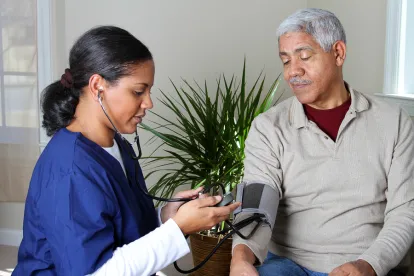At its core, the intentions of hospice care are noble: to provide care for those nearing the end of life. Many who choose to enter themselves or their loved ones into hospice care are drawn to its heavy focus on comfort, dignity, and quality of life during its final stages.
But the reality is a bit messier than that, as evidenced by this interesting article by the New Yorker. The story shines a light on the dark underside of for-profit hospice care, much of which rings true to me from my experience as a healthcare attorney.
Three things that stood out to me are:
1. The misadvertisement of hospice care
Hospice care is commonly sold as a way to get additional nursing care, and not necessarily as a comforting end-of-life experience. To be entered into hospice care, a patient must have a fatal prognosis—and patients who don’t die within the expected timeframe can be discharged with the expectation that family members will continue care at home.
The article interestingly points out that this is largely due to the fact that the federal government effectively demands repayment from hospice care facilities with patient stays averaging longer than six months. As a result of this need to fill the roster with new patients, those who live longer than expected can lose access to care and amenities that they otherwise may not be able to afford.
Key tip: keep records of what you were promised in terms of care.
When meeting with the admissions/salespeople of healthcare, write down what you were promised—because there’s a chance that these promises of care and services may not align with reality.
If you don’t keep those records and there is no recollection of what was promised, you may only end up with evidence that the patient had a terminal illness. As stated in the article, a common defense against nursing home cases is that “they were going to die anyways.”
2. The rise in private equity ownership
As illustrated in the article, ownership of hospice companies is increasingly moving away from non-profit entities, and toward for-profit entities, which often comes with a fundamental change in economic goals. This often results in blurred lines between the concepts of providing value and increasing profits, leading to corporate decisions to get people to do more with less.
Because Medicare offers hospice providers a set daily rate per patient, many facilities try to keep overhead costs low by outsourcing the bulk of their labor—and that burden often falls on unpaid family members.
Making arrangements to care for a dying loved one is never easy, and many people will rearrange their lives based on the promises of superior hospice care. After modifying work schedules, asking others for help with daily tasks, and unduly amounts of stress, many families become stuck with poor care after realizing they are not getting what they were initially promised.
3. The sufficient lack of regulatory oversight
Despite widespread complaints about the quality of hospice care, oversight is lacking. Medicare-certified hospice operations need only be inspected every three years—and the majority of those inspection reports find serious deficiencies such as failures to train staff and manage patient discomfort.
Despite these deficiencies, consequences are minimal. In fact, according to the article, only nineteen of the more than four thousand U.S. hospices were cut off from Medicare funding.
Hospice care concerns?
The reality is that our government is underfunded and lacks the resources to conduct thorough investigations of poorly performing healthcare companies. Often, the only way to meaningfully hold these companies accountable is to conduct thorough private investigations of the healthcare entity and, potentially, file a lawsuit.



 />i
/>i

